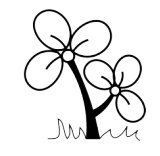Political Parties Class 10 Notes | Civics Chapter 6 Class 10 Notes. On this page, you can view notes for Political Parties Class 10 Notes | Civics Chapter 6 Class 10 Notes.
Political Parties Class 10 Notes
Why do we need Political Parties?
- A political party is a group of people who come together to Contest Elections and hold power in the Government. They agree on some policies and programs for society with a view to promoting the collective good.
- Panties reflect fundamental political divisions in society.
Thus a party is known by which part it stands for, which policies it supports, and whose interests it upholds. A political party has three components.
1. The Leaders
2. The active members
3. The followers
Functions of political parties
- Political parties fill political offices and Exercise political power Parties do so by performing a series of functions mentioned below.
1. Parties Contest Elections
2. Parties put forward different policies and programs and the voters choose from them
3. Panties play a decisive role in making laws for the country
4. Parties form and run Government
5. Those parties that lose in the elections play the role of opposition to the parties in power, by Voicing different views and criticizing the government for its failures OR wrong policies
6. Parties shape public opinion
7. Parties provide people access to government machinery and welfare schemes implemented by Governments
The Necessity of Political Parties
- We need political parties because they perform all the functions mentioned above. Apart from this, political parties help represent different views on various issues to the Government They bring various representatives together so that a responsible Government can be formed.
- They work as a mechanism to support restraining Government and Making policies. Justify OR Oppose them.
How many Parties Should we have?
- In a democracy, any Group of citizens is forced to form a political party. More than 750 Parties are Registered with the Election Commission of India.
- But not all these parties are severe contenders in the Elections so the Question is How many parties are Good for democracy.
One party system
- In Some Countries, Only one party is allowed to control and run the Government These are called party systems.
- This system is not considered a good option for democracy Ex - Communist Party of China
Two party system
- In Some Countries power usually change between the two main parties such a party system is called a two-party system.
- Eg: - The United States of America and the UK
Three party system
- If several parties compete for power and more than two parties have a reasonable chance of coming into Power either on their own strength on in alliance with others is called a multiparty system.
- Eg: India
Note Point: when several parties in a multiparty system join hands for the purpose of contesting elections and winning Power it is called Alliance OR a front.
National Parties
- Every party in the country has to register with the Election Commission. It offers some special benefits for large and established parties.
- The Election Commission has laid down detailed criteria for the proportion of votes and seats that the party must get in order to become a recognized Party.
1. A party that secures at least 6% of the total votes in an election to the Legislative Assembly of a state and wins at least 2 Seats is recognized as a state party.
2. A party that secures at least 6% of the total votes in Loksabha Elections OR Assembly Elections in 4 States and wins at least 4 Seats in the Lok Sabha is recognized as a National Party.
There are 7 recognized national parties in India Let's discuss each one of them in Detail.
Major Political Parties In India
There are 7 recognized national parties in the country in 2018 Here are the details of these parties
1) All India Trinamool Congress (AITC)
- launched on 1st January 1988 Under the leadership of Mamata Banerjee
- Recognized as a national party in 2016
- The party symbol is a flower and Grass
- committed to secularism and federalism
- Has been in power in West Bengal since 2011 and has a presence in Arunachal Pradesh, Manipur, and Tripura.
- In the General Elections Held in 2014 It got 3.84% of votes and won 34 Seats making it the fourth-largest party in Lok Sabha
2) Bahujan Samaj party (BSP)
- Formed in 1984 under the leadership of Karshi Ram
- seeks to represent and secure power for the Party which includes the Dalits, Adivasis, OBC, and Religious minorities
- stands for the cause of securing the interest and welfare of the Dalits and oppressed people
- It has a main base in: - UP and a substantial presence in neighboring states like Madhya Pradesh, Chattisgarh, Uttrakhand, Delhi, and Punjab
- Formed Govt in UP several times by taking the support of various parties
3) Bharatiya janta party (BJP)
- Founded in 1980 formed by Sayama Prasad Mukherjee in 1951
- Wants to build a strong and modern India by drawing inspiration from India's Ancient culture and Values and Decndayal Upadhyaya's ideas of integral humanism and Anto Daya
- cultural nationalism COR Hindutva) is an important element in its conception of Indian nationhood and politics
- Earlier limited to north and west and to Urban areas the party Expanded its support in the South, East, North -East and rural areas
- Emerged as the largest party with 282 members in the 2014 Lok Sabha
4) Communist Party of India (CPI)
- Formed in 192s Bellies in Marxism - Leninism, secularism, and democracy
- Opposed to the forces of secessionism and Communalism
- Accepts parliamentary democracy as a means of promoting the interest of the working-class farmers and poor
- significant presence in the states of Kerala, West Bengal, Punjab, Andhra Pradesh, and Tamil Nadu
- Secured less than 1% votes and 1 Seat in the 2014 Loksabha elections
5) Communist Party of India Marxist (CPI-M)
- Formed in 1964 Bellies in Marxism - Leninism, supports Socialism, Secularism, and democracy and opposes imperialism and communalism.
- Enjoys strong support in West Bengal, Kerala, and Tripura
- The part was in power in West Bengal without a break for 34 Years
- In 2014 won 3% of votes and a seats
6) Indian National Congress (INC)
- One of the Oldest panties in the world Founded in 1885 and has Experienced many splits
- Under the Leadership of Nehru, the party thought to build a modern secular Democratic Republic of India
- The ruling party at the Centre till 1477 then from 1980 to 1989 its support declined but it continues to be present thought the country
- The main idea of this party was to promote secularism and the welfare of weaker sections and minorities
7) Nationalist Congress party (NCP)
- Formed in 1999 following a split in Congress party
- supports democracy < Gandhian Secularism, Equity, Social Justice, and federalism
- The major party in Maharashtra and has a significant presence in Meghalaya, Manipur, and Assam
- since 2004 member of the United Progressive Alliance
State Parties
The election Commission has classified some of the major parties of the country as " State Parties"
These are also called regional Parties some of them are :
1. Biju Janta Dal
2. Sikkim Democratic front
3. Samajwadi Party
4. MIZO National Front
5. Telangana Rashtra Samithi
Challenges to Political Parties
1. Lack of internal democracy:-
Parties do not keep membership registers do not hold Organisational meetings and do not conduct internal elections regularly.
2. Most political parties do not practice open and transparent producers for their functioning, so there are very few ways for an Ordinary worker to rise to the top in a party in many parties the top positions are always controlled by members of one family.
3 The third challenge is about the growing Role of money and muscle power in parties especially during Elections since parties are focused only on winning Elections they tend to use short - Cuts to win elections in Some Cases Parties Support criminals who can win elections.
5. People do not find parties to be a meaningful choice for their votes
How Political parties can be Reformed?
1. The Constitution was amended to prevent Elected MLAs and MPs from changing parties.
2. The Supreme Court passed an order to reduce the influence of money and criminals Now it is mandatory for every candidate who contests to file an AFFIDAVIT giving details of his property and criminal cases pending against him.
3. The election commission passed an Ordem making it necessary for political parties to hold their Organisational Elections and file their income tax return.
Besides these many suggestions are made to reform political parties these suggestions have not been yet accepted by the political parties.
1. A law should be made to regulate the internal affairs of Political Parties
2. It should be mandatory for political parties to give minimum tickets and about one-third to women
3. There should be state funding for elections

.webp)








